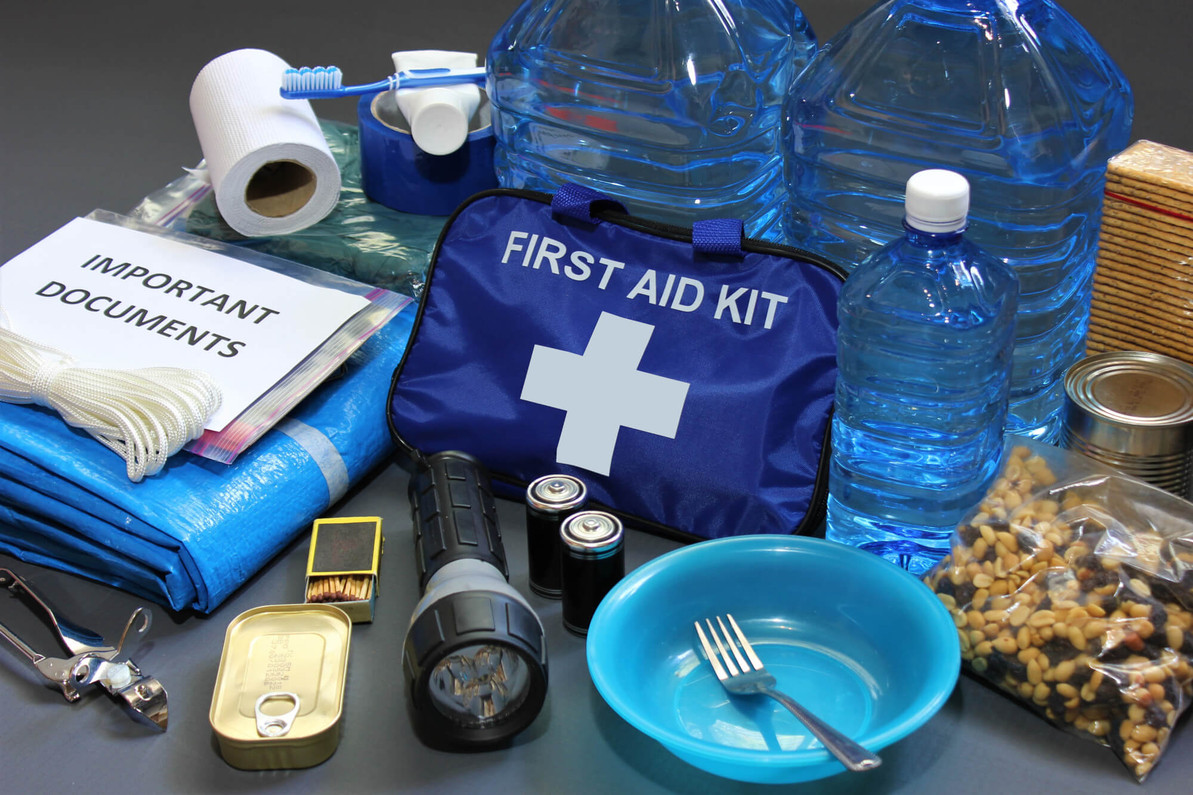Living in an area prone to hurricanes means living with the possibility of severe weather, power outages, and sometimes, needing to leave your home quickly. One of the most important steps you can take to feel prepared and stay safe is putting together a hurricane emergency kit. Think of it as your safety net containing essential supplies you’ll need if you lose power, can’t get to a store, or have to evacuate.
I’ve been through storms where having basic supplies readily available made a huge difference in reducing stress and handling the situation. You want to be self-sufficient for at least a few days, because help might not be immediately available.
What is a Hurricane Emergency Kit?
A hurricane emergency kit, sometimes called a go bag or supply kit, is a collection of essential items you and your family would need to survive for at least 72 hours following a hurricane or other disaster. It should be ready to grab quickly if you need to evacuate or accessible in your home if you need to shelter in place without utilities.
Where to Start: Get a Container
First, you need something to put everything in. A large plastic bin with a lid, a sturdy backpack, or duffel bags work well. Choose something you can easily carry or move.
Essential Items for Your Kit
Here’s a step-by-step guide to building your kit by gathering key supplies. Aim for a 3-day supply per person as a minimum, but ideally, try for two weeks if space and resources allow, especially for sheltering in place.
Step 1: Water
- Quantity: This is critical. Plan for at least one gallon of water per person per day for drinking and sanitation.
- Storage: Use clean plastic containers like empty soda bottles or commercially bottled water. Store in a cool, dark place.
Step 2: Food
- Type: Pack non-perishable food items. Choose things you don’t need to cook or refrigerate.
- Examples: Canned goods (fruits, vegetables, proteins like tuna or chicken), dry cereal, granola bars, peanut butter, crackers, dried fruit, nuts. Don’t forget comfort food like candy or cookies.
- Quantity: Enough for at least three days per person.
- Tools: Include a manual can opener!
Step 3: First Aid Supplies
- Kit: A well-stocked first aid kit is essential. You can buy one or assemble your own.
- Contents: Include sterile gauze pads, adhesive tape, bandages in various sizes, antiseptic wipes, antibiotic ointment, pain relievers (aspirin or non-aspirin), anti-diarrhea medication, antacids, laxatives.
- Manual: Include a first aid manual.
Step 4: Medications
- Prescription: Pack a supply of prescription medications (at least a 7-day supply). Check with your doctor or pharmacist about getting an extra supply for emergencies.
- Over-the-Counter: Include any necessary non-prescription meds like allergy medication, cough syrup, or required vitamins.
Step 5: Lighting
- Flashlights: Include flashlights or headlamps. Headlamps are great because they leave your hands free.
- Batteries: Pack plenty of extra batteries for all your devices. Check the sizes needed.
Step 6: Communication
- Whistle: A whistle to signal for help is small but important.
- Phone & Charger: Your cell phone is key, but service might be spotty. Pack a portable power bank or car charger if you have a car.
Step 7: Tools and Utility Items
- Wrench or Pliers: To turn off utilities if necessary (know how to do this before a hurricane).
- Manual Can Opener: Already mentioned for food, but worth highlighting again.
- Multi-tool: A good multi-tool can be very handy.
- Dust Mask: To filter contaminated air.
- Plastic Sheeting and Duct Tape: To shelter-in-place, you might need to seal off rooms.
- Garbage Bags and Plastic Ties: For personal sanitation.
Step 8: Important Documents
- Copies: Store copies of vital documents in a waterproof, portable container.
- Examples: Insurance policies, identification (driver’s license, passport), birth certificates, deeds/titles, medical records, proof of address.
- Contact Info: A list of emergency contact numbers (family, friends, doctors, insurance).
Step 9: Cash
- ATMs Might Be Down: Have some cash on hand. Electronic transactions may not be possible if power is out.
Step 10: Clothing and Bedding
- Change of Clothes: Pack at least one complete change of clothes and shoes per person. Consider the climate.
- Blankets/Sleeping Bags: Include warm blankets or sleeping bags for everyone.
Step 11: Sanitation and Personal Hygiene
- Wipes: Moist towelettes or wet wipes for cleaning if water is limited.
- Soap: Bar soap or liquid soap.
- Toilet Paper: A few rolls.
- Hand Sanitizer: For when washing isn’t possible.
- Feminine Supplies: If needed.
Step 12: Address Specific Needs
- Babies: Diapers, wipes, formula, bottles.
- Pets: Pet food, water, leash, carrier, medications, vaccination records.
- Glasses/Contacts: Extra pair of glasses or contact lenses and solution.
- Medical Equipment: Batteries for hearing aids, etc.
Step 13: Comfort Items
- Morale: Especially important if you have children. Pack books, games, puzzles, or toys to help pass the time and reduce stress.
Where to Store Your Kit
Keep your hurricane emergency kit in a place that is easy to access quickly, like a closet near an exit door or in your garage. If you have multiple levels in your home, consider having smaller kits on different floors. If you live in a multi-story building, know the evacuation routes.
Maintaining Your Kit
This isn’t a one-time task.
- Check Regularly: Review your kit at least once a year (maybe during hurricane season prep) or when there are changes in your family’s needs.
- Check Expiration Dates: Rotate food, water, medications, and batteries. Replace anything that has expired.
- Update Needs: Has your family grown? Do you have new medical needs? Adjust the kit contents accordingly.
Practice and Plan
Having the kit is only part of being prepared.
- Family Plan: Have a family emergency plan. Know where you will meet if you get separated. Know your evacuation routes.
- Practice: Practice going to your meeting place or getting your kit together quickly.
Building a hurricane emergency kit provides immense peace of mind. It might seem like a lot of work upfront, but knowing you have the essentials covered if a storm hits makes a world of difference.






